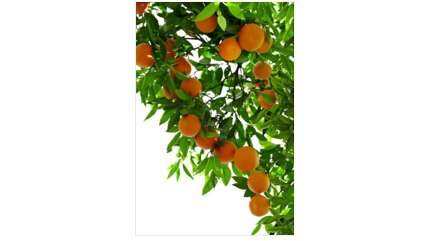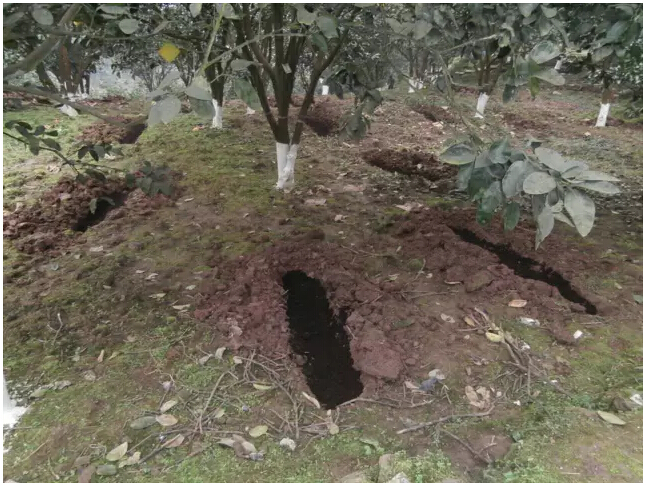
 Your current location: Index > NEWS
Your current location: Index > NEWS1. Choose the right fertilizer for your appetite
Generally speaking, fertilizing fruit trees is like eating, and a fertilizer is equivalent to a master chef. If a certain kind of fertilizer is too much or too little, the tree will appear "sub-health" state, such as weak or weak. In order to create a good site condition for root growth, the balanced fertilization of total nutrition should make efforts to supplement the organic matter, medium elements and trace elements which are seriously lacking in orchards. Because organic fertilizer is the "deposit book" of the soil, it plays an important role in the fertile soil root, improve the utilization rate of chemical fertilizer.
Chemical fertilizer should be formulated according to the different nutrient requirements of different varieties of fruit trees. Through a large number of field experiments, the reasonable ratios of nitrogen (n), phosphorus (P2O5) and potassium (K2O) of different fruit trees were determined as follows:
Apple 1:0.6:1
Grape 1:1.41:1.25
Pear 1:0.21:1.02
It should be emphasized here that although the annual growth and development of apple and pear have a "high medium high" demand for "nitrogen, phosphorus and potassium", the application of fertilizer in autumn should be more than 80% of the total amount of phosphorus fertilizer in the whole year, because autumn is the peak period of root growth in the whole year, phosphorus is the rooting nutrient, and the supply is stable throughout the year.
2. Fertilizer should be applied at "rice time"
The same kind of food, people feel comfortable when they eat it. When you miss a meal, it's tasteless. Autumn is the peak period of root growth of fruit trees. The nutrients absorbed and synthesized by roots are mainly used for storage, which plays an important role in germination, flowering, fruit setting and shoot growth in the coming year. Therefore, if the same fertilizer is applied from September to October, it will be as valuable as gold and silver; if it is applied after falling leaves and next spring, it will be devalued to the value of copper and iron.
3. Fat should be fed in the mouth
People feed on their mouths, trees feed on their roots, and the mouths of their roots are at the top of their shoots. Generally, 80% of the absorbing roots of fruit trees are mainly distributed in the soil of 10-50 cm below the vertical projection of the branches around the crown, which requires that 80% of the total fertilizer should be applied in this area. The results showed that the best application method for young trees and early bearing trees was ring expansion, and the alternate application method of radial furrow application and whole garden application could be used for trees in full fruit stage.
4. Using soil moisture to fertilize
If the soil moisture is not good enough, the root system can not absorb it. Because all kinds of chemical fertilizers applied to the soil are lifeless and motionless, they can only be absorbed and utilized by roots and leaves if they are dissolved in water. At the same time, the amount of nutrients absorbed and accumulated by fruit trees in the same year was also closely related to the transpiration pull of the aboveground branches and leaves. Taking advantage of the advantages of high transpiration pull and good soil moisture in early autumn, leaf transpiration can absorb a lot of water and nutrients from underground after fertilization, and the nutrient accumulation of tree body is more. Otherwise, no matter how high the effective components of fertilizer are, it can't be dissolved in water and has no functional leaves, and fertilizer will become useless copper and iron. This is the truth of "don't eat dry" fertilization with soil moisture.

Five mistakes in fruit tree fertilization
▼
Mistake 1: the closer the fertilization point is to the tree, the better
Many fruit growers think that fertilization is far away from the tree, the root absorption is poor, and the nutrient utilization is not good. Therefore, fertilization is very close to the tree, some are less than half a meter away from the root neck, and even dig out the backbone root. As a result, the phenomenon of damaging the root and burning the root often occurs, and the effect is contrary to the past.
Mistake 2: the more fertilizer, the better
Some fruit growers do not determine the amount of fertilizer according to the type of fertilizer, the strength of the tree, the size of the tree, the yield, the soil fertility and other factors, but blindly believe that the more fertilizer the better. The result is that the supply and demand of tree nutrition is unbalanced, the heavy ones burn roots and die trees, and diseases and insect pests breed. The light ones have unbalanced growth of nutrition and reproduction, only grow trees, and bear few or even no fruit.
Mistake 3: fertilizing time according to busy and idle
Some fruit growers do not apply fertilizer according to the time when fruit trees need fertilizer, but according to the busy and idle labor. "When trees need fertilizer, there is no time to apply it; when people are idle, there is no need for trees to apply it." what should be applied in spring turns into summer fertilization, what should be applied in autumn turns into winter fertilization, what should be applied before flower turns into after flower fertilizer, and what should be applied after flower turns into after fruit fertilizer Buckle.
Mistake 4: the type of fertilizer is determined at will
The application of fertilizer in orchard in autumn is just in conflict with the application of fertilizer in wheat field in autumn. Many fruit growers use chemical fertilizer instead of fertilizer, or use unripe crop straw instead of manure and other farm manure. The result is that the fertility of orchard decreases, the tree vigor weakens, the yield decreases and the fruit quality deteriorates year after year.
Mistake 5: pay more attention to underground than aboveground fertilization
Many fruit growers are used to underground fertilization, and they despise or do not understand the effect of above ground fertilization, which leads to serious physiological diseases such as yellow leaf disease, small leaf disease, fruit shrinking disease and early defoliation, and the photosynthetic function of leaves is reduced.

Where is the best place to fertilize fruit trees?
▼
When applying fertilizer to fruit trees, we should first know that fruit trees mainly rely on root hairs in their roots.
The top dressing of fertilizer for fruit trees should be mainly at the edge of crown projection or a little far away, not too close to the trunk, because there are thick roots near the trunk, and there are few fine roots and root hairs, which is not conducive to the absorption of fertilizer.
The depth of topdressing fertilizer for fruit trees should follow the following principles: the fruit trees with deep root distribution should be applied deeply, otherwise shallow; the decomposition of organic fertilizer is slow, but the fertilizer supply period is long, so it can be applied deeply, and the mobility of chemical fertilizer is large, so it can be applied shallowly; for deep rooted fruit trees such as pear trees, the depth of organic fertilizer should be 40-60 cm, while for shallow rooted fruit trees such as plum trees, the depth of organic fertilizer should be 30-40 cm Cm. Spraying new high fat film after fertilization can improve fertilizer efficiency.
Topdressing fertilizer for fruit trees can be applied between closed rows or close planting orchards. It is better not to damage or less damage the big roots. Only in this way can the fertilizer efficiency be brought into full play, the utilization rate of fertilizer be improved, and the purpose of increasing yield and income be achieved.



Correct fertilization seven character song
▼
Pay attention to the key points of fruit tree fertilization, distinguish the season, save energy and high yield.
The branches and leaves grow in summer and the roots grow in autumn, and the fertilizer needs in four seasons should be subdivided.
The trees with long branches and leaves are vigorous under nitrogen and strong under phosphorus.
Potassium fertilizer increased sugar content, and the fruit was sweet and colorful.
It is necessary to use trace elements as needed.
The results showed that the fruit setting was good, the branches and leaves were luxuriant and the diseases and insect pests were few when nitrogen fertilizer was applied in spring.
When potassium fertilizer is applied in summer, the fruit needs potassium to expand.
According to the tree vigor and fruit quantity, the combination of nitrogen and potassium should be appropriate.
If you apply enough fertilizer this time, the flower buds will be strong and good in the coming year.
In autumn, we should pay attention to the application of phosphate fertilizer, and the fruit will be larger and better colored.
If you want to have more fruits and healthy trees, a reasonable collocation will be realized.
In spring and summer, nitrogen fertilizer can promote fruit growth, and in autumn and winter, phosphorus and potassium are the best.
Good foliage fertilizer spray 3 times, sweet fruit, bright color.
If calcium is added before bagging, the fruit surface will be smooth and less disease.
Source: microbial organic fertilizer

Click the QR code above to follow!